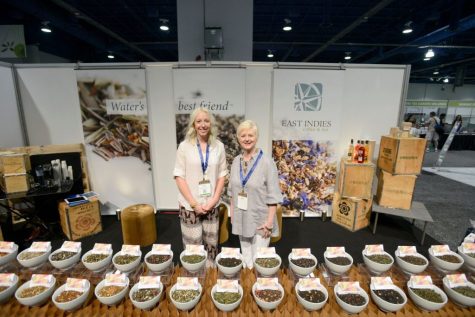A Take on Tea: Bridging Cultures and People
Before the advent of the worldwide pandemic, I was an avid consumer of milk tea. My addiction isn’t uncommon; this sweet, milky beverage is a widespread phenomenon of the 2000s and a cultural icon for Asian-Americans. However, with the depressing grasp of quarantine and a wallet steadily bleeding five dollars a week, I now satisfy my thirst for tea in a new way—or rather, a way from the past.
I have substituted plastic cups for ceramic mugs and ditched drives to Tastea for walks to my kitchen. Not only has the switch to homemade tea saved me a pretty penny; I’ve gained a priceless appreciation for other cultures, the rich history of tea itself, as well as this simple beverage’s power to unite us.
As one Chinese legend has it, a few leaves of the Camellia sinensis plant, stirred by the wind, fell into a pot of boiling water tended by Emperor Shen Nung’s troops back in 2737 BC. Regardless of its true origin, tea has been a staple to not only Asian culture, but the history of the world.

Tea has actually been a uniting force throughout history, partially producing the melting pot of humanity we see today. For instance, due to its temperamental nature, the finest tea can only be grown in certain regions of the world. Therefore, the passionate pursuit of the lucrative leaf throughout history was conducive to worldwide trade and the resulting amalgamation, or the blending of, different cultures and people. In fact, all types of tea are of the same parent plant, only differing in their methods of preparation. This opens up countless possibilities for cultures to develop their own tea traditions. The creation and consumption of tea is a staple of many cultures in the world. There’s something inherently special about sharing a hand-crafted hot beverage with an acquaintance or loved one.
During the well-known Japanese tea ceremony, people bond over the intricate, calming process of preparing and enjoying a special type of tea called matcha. The process celebrates simplicity and naturalness, providing a time to relax and enjoy time with people you know, which has become increasingly rare in our busy modern lives. Many British people enjoy an additional afternoon meal with tea. For most of us, as Americans, the two or three meals we have daily offer a time to similarly bond with our families. It’s so easy to be wrapped up in our own lives, and tea provides another small, shared moment.
As with any element of a culture, tea can actually bridge the gap between different people. In the year 2012, American soldiers visited Camp Sendai for a bilateral training exercise. To their surprise, they were greeted with a special treat: The US Army and Japanese Ground Defense Forces were able to bond over a traditional tea ceremony. According to Sergeant Nicole Newton: “I walked into the tea ceremony out of curiosity, but walked out feeling refreshed, re-energized and cultured.”

More recently, tea drinking conventions, such as the World Tea Expo, have provided fans of the drink a forum to meet and discuss. For the past eighteen years, tea lovers have gathered at the World Tea Conference and Expo in Denver, Colorado to test new tea innovations, build tea businesses, listen to tea stories, and par-tea!
Not only has the love of tea spanned borders and oceans, but it has stood the test of time. Different generations are brought together over this simple drink, from classic leaves steeped in a pot to the tea served with milk and tapioca pearls that modern teenagers know and love. Throughout history, humanity has fractured and shifted, divided by oceans and conflicts. Due to factors geographic and cultural, few things remain universal. Yet tea is one of them.


